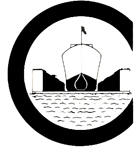Over 150 years of expertise in marine railways and floating dry docks
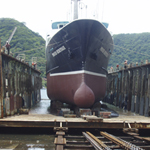 |
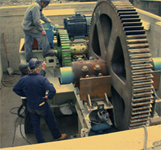 |
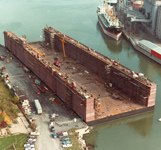 |
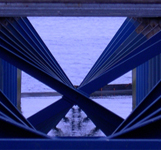 |
|
An
Introduction to Railway Dry Docks
and Transfer Systems
Part
11 - Restoration and Enlargement
|
3. Side haul railway dry docks |
Some parts of a railway dry dock, such as the pile foundation and the machinery foundation, do not deteriorate as the dock is used. Others - the hauling machine, electric motor, and underwater timber ways - can last up to 100 years and thus outlive several times the useful life of the cradle, chains, roller system, and rail plates. Since the more durable parts represent over half the cost of a new facility, it is economical to rebuild or restore older facilities, replacing inadequate parts with improved, modern equipment. As an example, the older docks had timber cradles. When one of these requires replacement, we find it is more economical today to use a steel frame, which reduces the weight and therefore increases the useful capacity. A 1000-ton wooden cradle for a 5000-ton dock might be replaced by one in steel weighing 600 tons, raising the lifting capacity to 5400 tons. In a rebuilding project we often increase the capacity additionally by making the new cradle and the track longer - the load per lineal foot cannot exceed the foundation's original capacity, but the total load can go up (larger hauling chain may also be required) This approached helped Norfolk Shipbuilding and Drydock Corp. to increase the capacity of its large railway from 4500 to 5200 tons. It is sometimes possible to extend the range of haulable vessels by widening the cradle, without foundation strengthening or other major modifications. The Ferguson Industries 2000-ton railway at Pictou, Nova Scotia was first widened to take North Umberland ferries and then lengthened to take CNR ferries, both without any long down time of the dry dock. It may be worthwhile to reinforce the foundation and provide stronger track and cradle structure for greater load per foot and perhaps greater total weight. In the case of the 5000-ton railway dry dock of Marine Industries LTD. At Sorel, Quebec, the capacity per lineal foot was increased form 14 to 19 tons per foot. The reconstruction consisted largely of track and foundation reinforcement, with a cradle having heavier, stiffer beams. As a wartime facility it was intended to haul river vessels and to launch hulls of new vessels built in the adjacent transfer area. Today it must be capable of launching vessels finished and ready for sea or of drydocking ocean ships with much heavier load per foot of length than before. In this case the transfer ways also required reinforcement.
|
Progress...the result of never being satisfied
Crandall
Dry Dock Engineers, Inc.
Established 1854
(888) DRYDOCK crandalldd@aol.com
